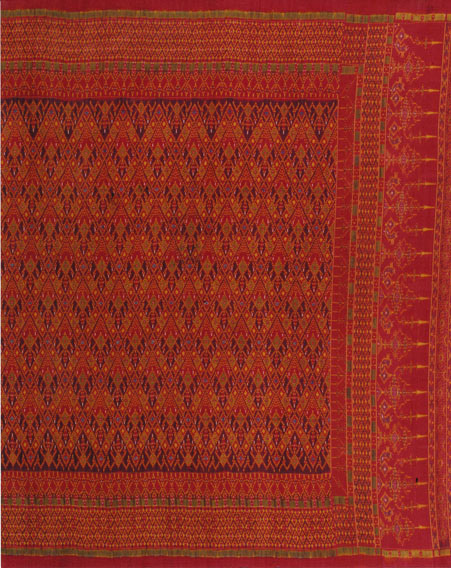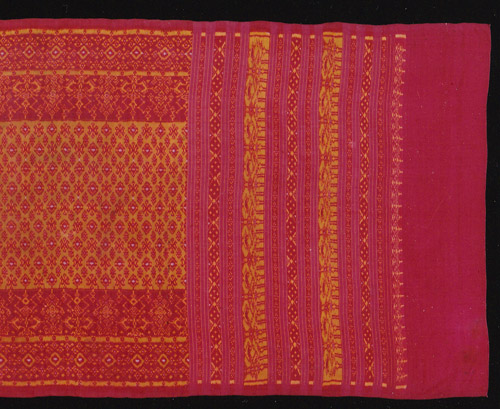Hi People
Large Khmer silks are almost
impossible to photograph without studio lighting and equipment because of
ther size and the low contrast in the palette. I discovered some
professionally done photos of two large silks that I own tucked in a book,
and present them here. Both probably date to around 1900.
The first
one is more than 9 feet long, was probably either a hanging in a temple or
worn as a pantaloon.


The elaborate designs at the ends are typical of Royal
Khmer textiles.
The next one is almost 12 feet long. The ground
color of the field is a green that I've never seen in anything except a
Khmer textile.


Regards
Steve Price